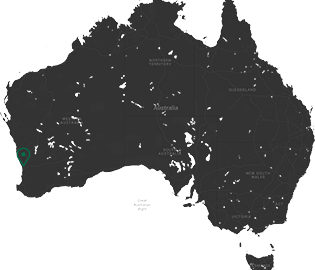1. Beating the Lo Doc blues
2. Looking beyond the bright lights
3. Cosy shouldn’t mean costly
4. Try before you buy: secrets of pre purchase inspections
5. Economic Wrap
Dear Valued Clients,
Welcome to the winter edition of Mortgage News!
The cold weather might be just around the corner, but for me winter isn’t all about dark and gloom. Winter is the perfect opportunity to stop and reflect on the year so far.
To keep the ball rolling in the second half of the year, I have provided a little something for everybody in this edition of Mortgage News.
Inside this issue we touch on; how to get a loan across the line, the importance of diversifying your property portfolio and how to stay warm this winter without sending power bills through the roof as well.
If you wish to discuss anything outlined in this newsletter or would like to review your current lending, give us call today!
And please remember, we do offer incentives for referring friends and family as we’re always looking to assist others in achieving their financial goals.
Yours Sincerely,
Galvin Dawson
Director
Finance Edge Australia Pty Ltd

If you’re self-employed or own your own business, pulling together all of your financials can be a tough ask – but that shouldn’t stand in the way of your securing a home loan.
‘Low doc’ loans are the perfect alternative for borrowers who struggle to come up with all financial documents for a loan application – an issue faced by many in Australia’s self-employed sector.
In common with all home loan applications, borrowers are generally required to submit a standard loan application. However, instead of providing, say your PAYG statement, the self-employed applicant would provide a verified Business Activity Statement when they apply for a low doc product.
Borrowers can apply for investment or owner-occupied home loans and even small business loans.
A loan-to-value ratio (LVR) of 80 per cent is considered to be standard with these products, though higher amounts may be available through some lenders.
Because of the added risk to the lender in providing this type of loan, be aware that special conditions may apply and low doc borrowers will likely pay a higher rate of interest than a comparable loan to a PAYG applicant.
Lenders mortgage insurance (LMI) commonly applies to borrowers with a deposit of less than 20 per cent of the property’s value. However, low doc borrowers may be required to take up LMI for loans exceeding 60 per cent of the home’s value.
The good news is that there is some choice in how you pay these fees.
Most lenders provide two options for paying mortgage insurance: an upfront payment, or cover the costs using your mortgage by increasing the value of your loan. The choice is yours!
If you are having a hard time sourcing the necessary financial documents or you have recently been knocked back by a bank, give us a call today!
We can help with your application, save you time and aid you in getting back to focusing on what matters most – running your business.

Inner-city markets have long been perceived as an attractive option for property investors, however outer-city areas also offer some lucrative returns.
Major Australian, inner-city’s suburbs have been popular for many investors, often due to their close proximity to… well, just about everything.
Despite this, there are still some unique advantages associated with the outer-city areas.
For instance, outer-city markets tend to offer a lower entry point than their inner-city counterparts. The upside to investing at a lower entry point with a more affordable property is that you may require a smaller loan and less debt overall and lower monthly repayments.
In addition, starting at a lower price points allows investors to enter the market with the option of adding further value through cost-effective renovations.
But it’s not only investors who benefit from these lower price points.
Affordable rental accommodation in outer-city suburbs may increase rental demand in these areas. As a result, vacancy rates remain relatively tight across most markets, leaving investors spoilt for choice when it comes to finding a suitable tenant.*
If you already have a few investments under your belt, with a majority of them in inner- city areas, then a property in the outer- city suburbs may be just what your portfolio needs.
Diversifying your property portfolio by investing in different suburbs and in different types of property can bring with it some significant advantages.
A diversified portfolio may lower any shortfalls you may encounter should a particular market collapse or if rental demand wanes.
It is important to treat your investment as a business and leave your emotions at the door. Keep in mind that you are not looking for your dream house; rather, a vehicle through which to create potential long-term wealth.
So, even if you’re not an outer suburbs person yourself, don’t let that cloud your investment decisions.
Your investment strategy as well as your budget and what you can afford will dictate where and what type of properties you purchase.
If you would like help reviewing your current mortgage or need a hand securing finance for your next purchase, please feel free to contact us today.
*http://www.sqmresearch.com.au/graph_vacancy.php?national=1&t=1
![]()
Renovation has long been an effective tool, not only to better your own lifestyle but also can add value to your property.
If you’re looking to renovate your property for maximum value, keep these tips in mind:
- Make sure the property’s structure is actually capable of supporting an extension or renovation and is structurally sound. It is encouraged to engage a professionally qualified tradesman to carry out this inspection.
- Check with your local council and relevant authorities that your plans meet legislation and planning guidelines
- Ensure you don’t over capitalise the property – don’t overspend on design, finishes and fittings
- Create a design that matches the lifestyle requirements of the current market
- Do not lock yourself into a contract until you have explored every alternative

Heating your home doesn’t have to cost the earth… or the planet
Winter time inevitably sees high electricity bills due to the cost of heating your home. But with a few cost-effective tips, you’ll be able to keep your house warm – and reduce your impact on the environment.
Keep doors closed: Closing doors traps heat and blocks air movement. By shutting internal doors, you will help to keep your house warmer at night.
Invest in double-glazing: Cheap windows let the cold air make your house even colder in winter. By investing in quality double-glazed windows, you may knock hundreds of dollars off your heating electricity bill.
Close curtains: For those who do not have double-glazed windows, closing the curtains at night not only gives you privacy but helps to stop the cold from penetrating your home. You’ll also feel warmer in your bed if it’s away from the windows.
Get cooking: Winter is the best time to perfect your culinary skills in the kitchen, and the steam and heat associated with cooking on the stove top will help warm your house.
Floor rugs: Hot air rises, which means that when it comes to the floor, things can get quite cool. By placing rugs on the floor, particularly in tiled areas, you’ll notice the difference almost instantly… and so will your feet.
![]()
- Keep blinds and curtains closed
- Shut doors to keep heat in main rooms
- Use rugs on a hardwood floors
- Turn the heating thermostat down
- Install energy efficient appliances

If you’re about to sign on the dotted line for your dream home, stop and ask yourself: How can I be sure the property I’m buying is in good shape?
A pre-purchase inspection is essential for every home purchase – whether it’s your new family home or an investment property.
Not only will it help identify potentially serious problems with your proposed purchase, it could save you thousands of dollars in the long run.
An inspection can reveal significant building problems or hazards, and help you decide if the property is really what you are looking for after all.
The person who inspects the property – typically a licensed builder – will check the condition of the interior, roof and roof space as well as the under-floor space of the home you intend to purchase – provided they are accessible.
They’ll then provide a detailed report, usually in a checklist format, once they have completed their inspection.
The price of a pre-purchase inspection depends on the property and the time taken to make the evaluation, but as a rule of thumb the cost for a standard report on a typical residential property is usually around the $500 mark, but can vary in each state and even between different suburbs.
If that sounds steep, consider that any issues highlighted in the report can be a valuable bargaining tool to drive down the asking price.
Just remember, you’ll need the vendor’s permission to have the property inspected – so be sure to give plenty of notice. This will help ensure that the places you need to have inspected are accessible.
If you’re not sure how to arrange a pre-purchase inspection, give us a call – we’ll be able to point you in the direction of a well-respected and qualified organisation.
![]()
A property inspection could mean the difference between a good and a bad investment; however, there are some things that it may not include.
Possible exceptions include:
- Footings
- Concealed damp-proofing
- Electrical wiring
- Plumbing
- Drainage
- Watering systems
- Gas fittings
- Fireplaces or chimneys
- Television reception

As we approach the end of the financial year, homebuyer confidence and investor demand are both on the rise, according to new research conducted by the Commonwealth Bank of Australia and the Mortgage & Finance Association of Australia.
True, we’ve seen benchmark interest rates fall to their lowest level on record; the broader job market is subdued, and housing activity has stagnated. But most recently, new data has provided a fresh outlook for economists, homebuyers, investors and mortgage holders alike.
In the latest Home Finance Index, 49.8 per cent of the 1,361 people who responded to the survey believe residential prices will rise over the next quarter – double the percentage recorded in March 2012*.
The number of active buyers likely to be in the market for a home loan over the next year has jumped by almost 50 per cent, from 12.7 per cent of respondents to 18.9 per cent*.
According to Kathy Cummings, the Commonwealth Bank of Australia’s executive general manager, third party and mobile banking, homebuyers and investors are growing in confidence as more opportunities start to emerge.
“The property market is all about confidence and the survey confirms that good times are ahead – especially as interest rates continue to be at historic low levels – creating a situation where mortgage repayments are more affordable than rents in many areas,” she said.
Providing further evidence of the strength of the Australian property market, new research has confirmed credit demand is on the rise.
According to Veda’s Quarterly Credit Demand Index, overall demand for credit increased by 4.7 per cent in the past year, the strongest rate of annual growth since the global financial crisis**.
Angus Luffman, general manager of consumer risk at Veda, said the new data provides encouraging insight into the re-emergence of consumer confidence and the strength of the Australian property market.
“The good news is that mortgage enquiries are still lifting slowly, which indicates that the current upturn in house prices is likely to have further to run.
“House prices are being supported by low interest rates, improvements in affordability and solid population growth.”
Understanding this data can be difficult, but one thing is certain: opportunity awaits those willing to enter the property market, both first timers and seasoned investors or home owners alike.
To discover how we can help with your plans, please give us a call today!
*http://www.mfaa.com.au/default.asp?artid=2932&menuid=371
**href=”http://www.veda.com.au/news-and-media/article.dot?id=542342























